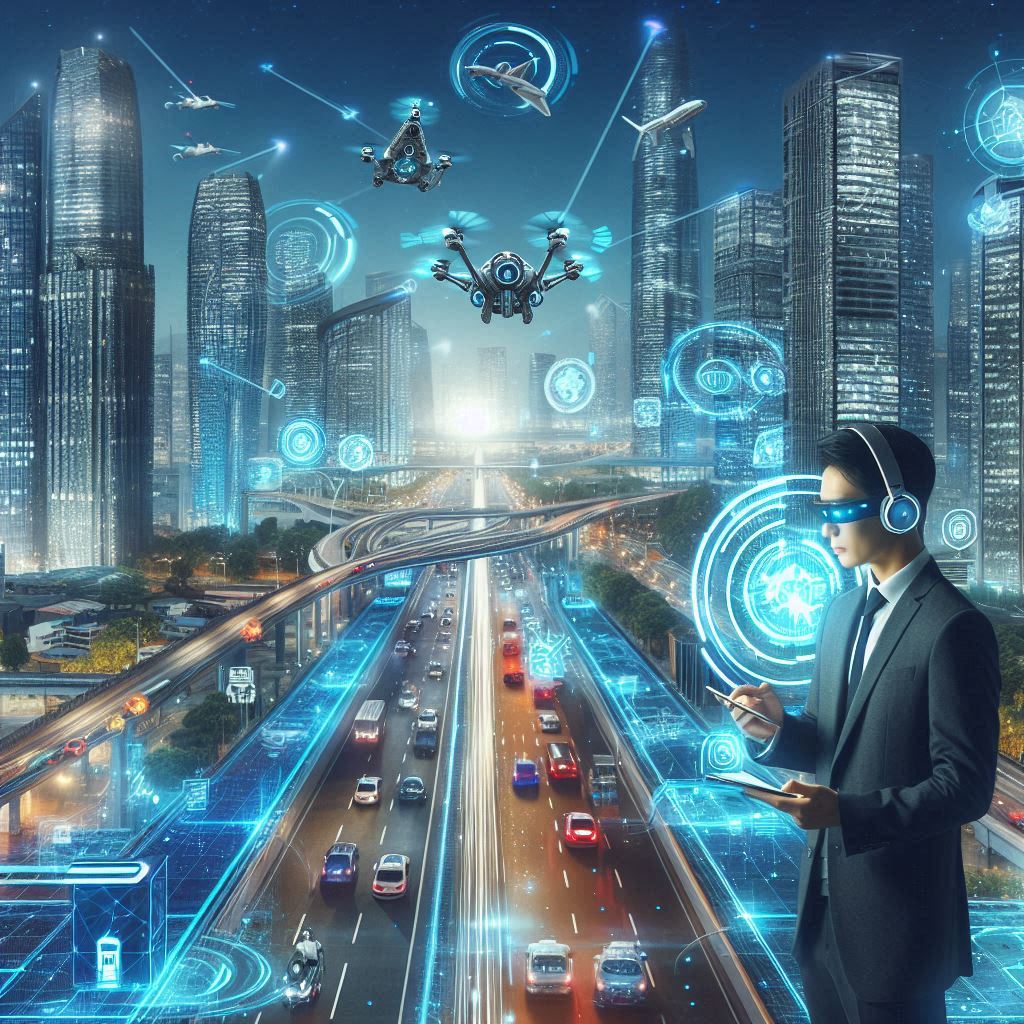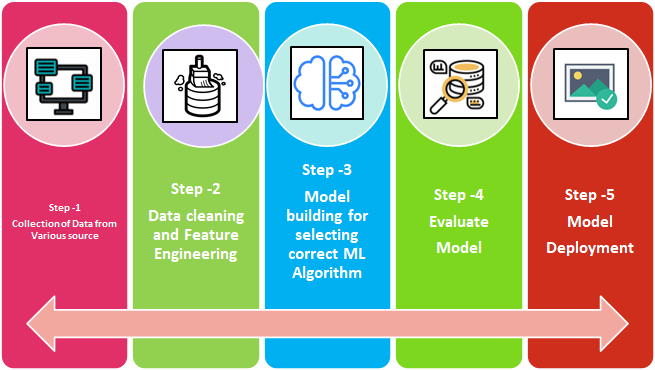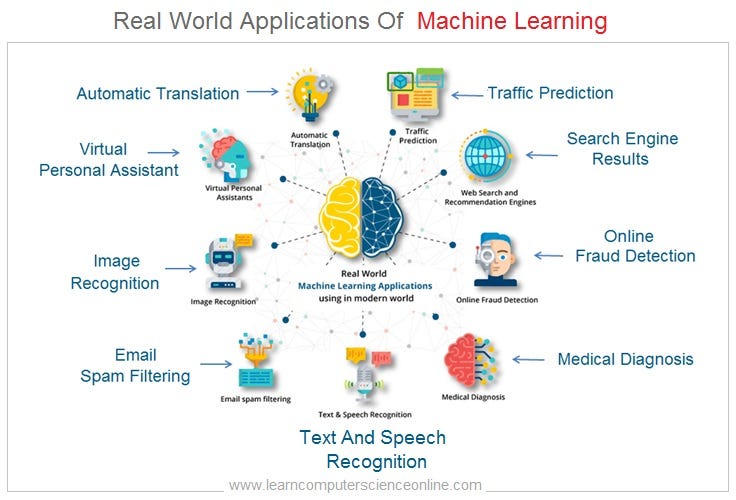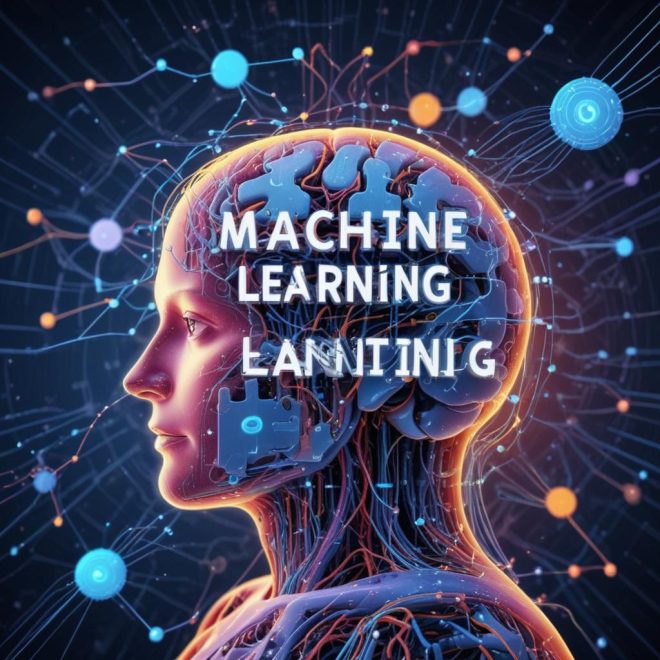WHAT EXACTLY IS MACHINE LEARNING?

Machine learning is a sub field of artificial intelligence (AI) which focused on teaching computers to learn from data and to improve with experience instead of being explicitly programmed to do so, It involves training models on large datasets to recognize patterns, make decisions, and improve performance over time, In machine learning, algorithms are trained to find patterns and correlations in large data sets and to make the best decisions and predictions based on that analysis.
How does machine learning work?

The machine learning process defines the flow of work that is execute to create and deliver a machine learning model. In addition, the ML process also defines how the team works and collaborates together, to create the most useful predictive model.Machine learning uses a systematic approach to predict new values. Each step is important and cannot be skipped to achieve high accuracy.
Collection of Data from Various source
Collect data from various sources such as databases, APIs, sensors, or web scraping. The quality and quantity of data are crucial as they directly impact the model’s performance, Ethical use of data should be kept in mind. We must uphold fairness and privacy while using these datasets to achieve our goal.
Data Cleaning and Featuring Engineering
Data cleaning, also known as data preprocessing, is the process of identifying and correcting errors, inconsistencies, and inaccuracies in the data. This step ensures that the data is reliable, complete, and in a suitable format for analysis like handling missing values, removing duplicates, normalizing data formats and removing outliers while Feature engineering is the process of selecting, transforming, and creating new features from existing data to improve the performance of machine learning models which include creating new features from existing ones, feature scaling and feature transformation.
Model building and selecting correct ML algorithm
Building a machine learning model involves several stages, including understanding the problem, preparing the data, selecting the appropriate algorithm and training the model, After getting the dataset an algorithm is used based on our problem to model the dataset. The dataset is divided into two parts: training and testing sets. Various models are used, for example, linear regression, logistic regression, decision trees, etc. Hyperparameter tuning is also done to improve accuracy. Techniques like grid search and random search are used for tuning the parameter.
Evaluating The Model
Evaluating a machine learning model is crucial to understanding its performance, identifying potential improvements, and ensuring it generalizes well to unseen data. The evaluation process involves using various metrics and techniques tailored to the specific type of machine learning problem being addressed (e.g., classification, regression) ,Metrics such as accuracy, precision, recall, F1-score, and confusion matrix guide the assessment of model performance. Cross-Validation and techniques like k-fold and leave-one-out help us in determining the efficiency of the model. These values are the determinants of the accuracy of the model.
MODEL DEPLOYMENT
Deploying a machine learning model involves taking a trained model and making it available for use in a production environment making it available for use by end-users or other systems where it can process real-time data and generate predictions. It is a process of integrating the trained model into real-world issues to solve them. This is the practical use of the model building and training.
APPLICATIONS OF MACHINE LEARNING

Machine learning (ML) has a wide range of applications across various industries, leveraging its ability to analyze large amounts of data and make predictions or decisions.Machine learning is one of the most exciting technologies that one would have ever come across. As is evident from the name, it gives the computer that which makes it more similar to humans: The ability to learn. Machine learning is actively being used today, perhaps in many more places than one would expect. Today, companies are using Machine Learning to improve business decisions, increase productivity, detect disease, forecast weather, and do many more things. With the exponential growth of technology, we do not only need better tools to understand the data we currently have, but we also need to prepare ourselves for the data we will have. To achieve this goal we need to build intelligent machines.The best way to do it is to have some way for machines to learn things themselves. A mechanism for learning – if a machine can learn from input then it does the hard work for us.This is where machine learning comes into action.some key applications of machine learning:
Healthcare
Machine learning (ML) is revolutionizing healthcare by enhancing diagnostics, personalizing treatments, predicting patient outcomes, and streamlining operations.The Healthcare industry is an essential industry that offers care to millions of citizens, while at the same time, contributing to the local economy.some application of machine learning in health sector includes personalized medicine,treatment optimization and remote monitoring.The one major application of AI in medical diagnosis is MRI scans. AI has taken over the complex analysis of MRI scans and it has made it a much simpler process.
Online Fraud Detection
Machine learning is making our online transaction safe and secure by detecting fraud transaction. Whenever we perform some online transaction, there may be various ways that a fraudulent transaction can take place such as fake accounts, fake ids, and stealing money in the middle of a transaction. So to detect this, Neural networks helps us by checking whether it is a genuine transaction or a fraud transaction.
Self Driving Cars
One of the most exciting applications of machine learning is self-driving cars. Machine learning plays a significant role in self-driving cars. Tesla, the most popular car manufacturing company is working on self-driving car. It is using unsupervised learning method to train the car models to detect people and objects while driving.Even though the algorithms and tech stack behind these technologies are highly advanced but at the core it is machine learning which has made these applications possible.
Virtual Personal Assistant
We have various virtual personal assistants such as Google Assistant, Alexa, Cortana, Siri. As the name suggests, they help us in finding the information using our voice instruction. These assistants can help us in various ways just by our voice instructions such as Play music, call someone, Open an email, Scheduling an appointment, etc.These virtual assistants use machine learning algorithms as an important part by recording our voice instructions, send it over the server on a cloud, and decode it using ML algorithms and act accordingly.
Email Spam and Malware Filtering
Whenever we receive a new email, it is filtered automatically as important, normal, and spam. We always receive an important mail in our inbox with the important symbol and spam emails in our spam box, and the technology behind this is Machine learning.
conclusion
machine learning is a powerful technology that enables machines to learn from data and make predictions or decisions, with applications across various industries and the potential to transform many aspects of our lives.It focuses on developing algorithms that can access and analyze data, identify patterns, and make decisions with minimal human intervention.





